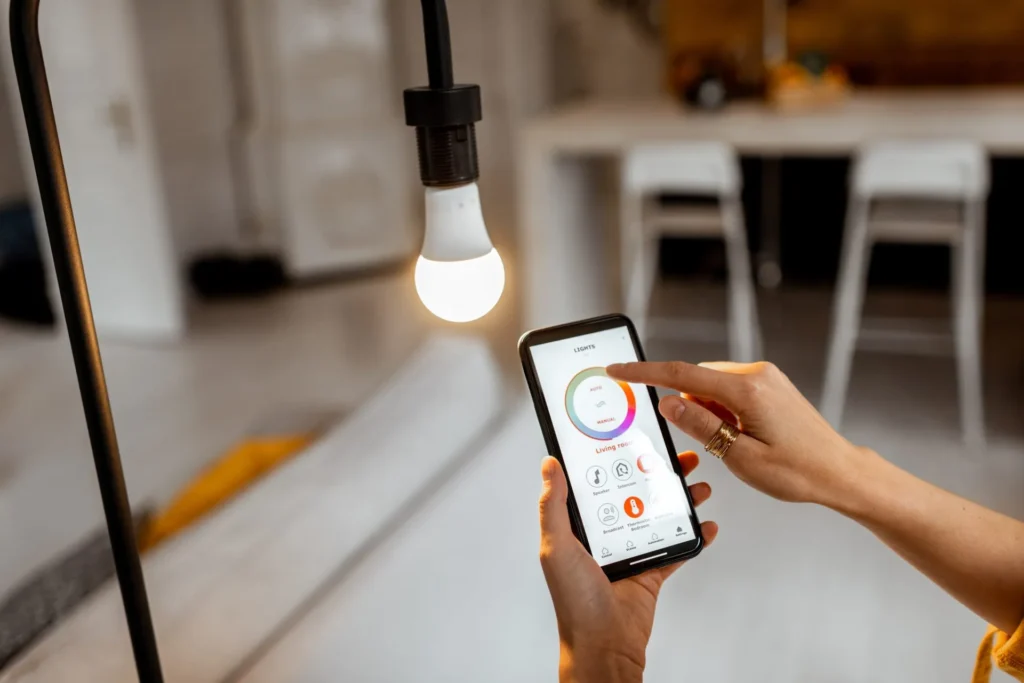Smart lighting is becoming a popular choice for homeowners. But do smart lights save money? The short answer is yes. They help reduce energy waste, making your electricity bill lower. Many people don’t realize how much energy lighting uses. By switching to smarter solutions, you can cut unnecessary costs and improve efficiency.
How Much Energy Does Lighting Use?
Lighting is responsible for a large portion of your energy bill. The exact amount depends on the type of bulbs you use. Incandescent bulbs consume the most power, while LEDs use much less. Understanding how much energy lighting uses helps you make smarter choices.
- Incandescent bulbs: Around 60 watts per bulb
- CFL bulbs: About 14 watts per bulb
- LED bulbs: Roughly 8-10 watts per bulb
By replacing old bulbs with smart LEDs, you can lower your electricity costs. This change alone can make a noticeable difference in your monthly expenses.
Do Entry Light Sensors Save Money?
Another way to cut costs is by installing entry light sensors. These sensors automatically turn lights on and off when needed. So, do entry light sensors save money? Yes! They prevent lights from staying on when not in use. This small change helps lower your energy bill without effort.
Why Smart Lights Are Worth It
Now, let’s go back to the key question: Do smart lights save money? Here’s how they help:
- Lower Energy Use – Smart LEDs use up to 80% less energy than incandescent bulbs.
- Scheduled Lighting – Set timers to turn lights on and off automatically.
- Motion Sensors – No need to worry about forgetting to switch off lights.
- Dimming Options – Reduce brightness to cut power use further.
- Remote Control – Turn off lights from anywhere using your phone.
- Longer Lifespan – LED smart bulbs last significantly longer than traditional ones, reducing replacement costs.
These features help cut electricity costs without changing daily habits.
Comparing Traditional vs. Smart Lighting
| Feature | Traditional Bulbs | Smart Lights |
| Energy Consumption | High | Low |
| Lifespan | Short | Long |
| Control Options | Manual | Remote/App |
| Motion Sensing | No | Yes |
| Scheduling | No | Yes |
| Dimming | Limited | Adjustable |
Smart lighting clearly has the upper hand. These benefits prove that switching to smart bulbs can lead to savings.
How Much Energy Does Lighting Use Annually?
The average home spends about 15% of its electricity on lighting. This number can be reduced by using smart lighting solutions. Here’s a rough breakdown:
- Traditional bulbs: Around 1,500 kWh per year
- LED bulbs: Around 500 kWh per year
- Smart lighting system: Even lower due to automation and efficient power use
Switching to smart LEDs can cut this number in half. That means real savings on your electric bill over the years.
How Entry Light Sensors Reduce Waste
Do entry light sensors save money? Absolutely. Here’s why:
- Lights only turn on when movement is detected – No wasted energy.
- No need to leave lights on for security reasons – Automatic control improves efficiency.
- Reduces energy waste by preventing unnecessary use – Less electricity used.
- Works well for garages, driveways, and entryways – Ideal for outdoor security and convenience.
These small changes add up to big savings over time, making them an excellent investment.
Are Smart Lights Expensive to Buy?
One concern people have is the upfront cost. Smart lights do cost more than traditional bulbs. However, the long-term savings outweigh the initial investment. Here’s why:
- LED smart bulbs last up to 25,000 hours, reducing the need for frequent replacements.
- They use 80% less energy than incandescent bulbs, making them highly efficient.
- Features like dimming and motion sensors reduce unnecessary use, further lowering costs.
- Smart bulbs connect to apps, allowing better control over energy consumption.
A smart bulb can pay for itself in energy savings within a year. That makes them a wise investment for any home, especially for those looking to cut long-term costs.
The Best Places to Use Smart Lighting
If you want to make the most of your smart lighting, here are the best spots:
- Entryways – Motion sensors turn lights on only when needed, avoiding unnecessary power use.
- Living Room – Use dimmable smart bulbs to control brightness based on activity.
- Bedrooms – Set schedules to gradually dim before bedtime, helping you sleep better.
- Kitchen – Use voice commands or phone apps for hands-free control while cooking.
- Garage – Entry light sensors prevent unnecessary energy use when accessing your car.
- Hallways and Staircases – Motion sensors ensure safety without wasting power.
Each of these placements helps maximize energy savings and convenience.
How to Save Even More
If you’re serious about lowering your energy bill, follow these additional tips:
- Replace all old bulbs with smart LEDs to reduce overall consumption.
- Use smart plugs to control regular lamps remotely.
- Set up schedules to ensure lights only operate when necessary.
- Install entry light sensors for automatic lighting control in high-traffic areas.
- Adjust brightness levels based on time of day and natural light conditions.
- Use voice assistants to avoid accidental energy waste when you leave lights on.
These small adjustments make a big difference over time, cutting costs and reducing unnecessary energy waste.
Conclusion
So, do smart lights save money? Without a doubt. They use less energy, last longer, and provide better control over lighting. Plus, they’re easy to use and adjust according to your needs.
And what about entry light sensors? Do entry light sensors save money? Yes! They reduce waste by keeping lights off when not needed.
If you’re ready to upgrade your lighting, now is the time. Save money, use less energy, and enjoy better lighting control with smart solutions.

